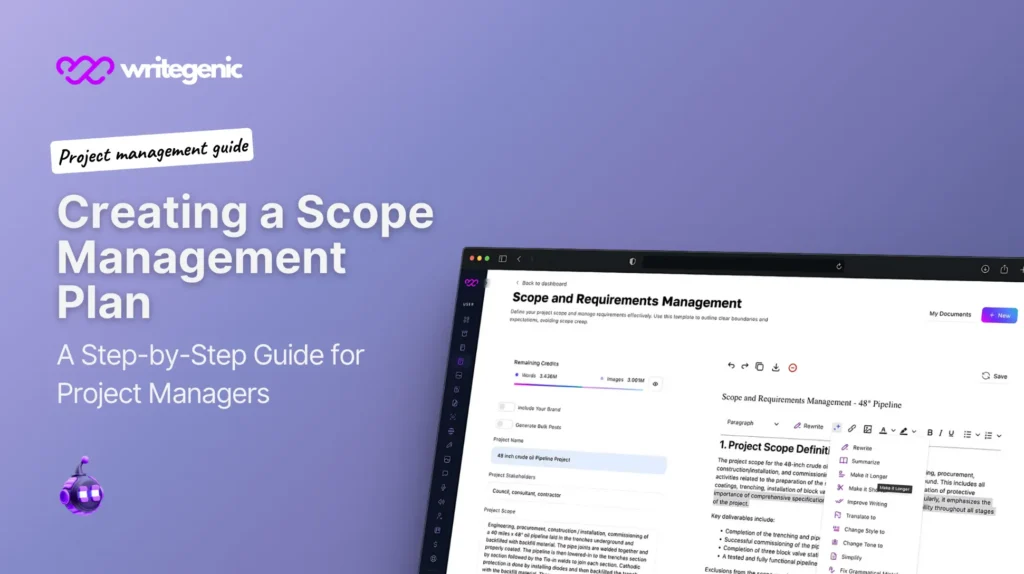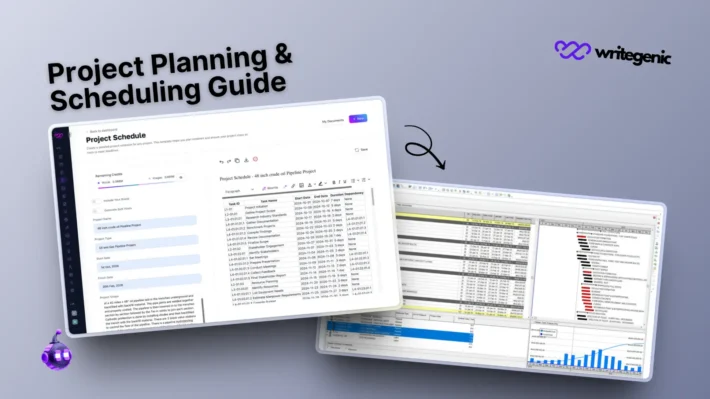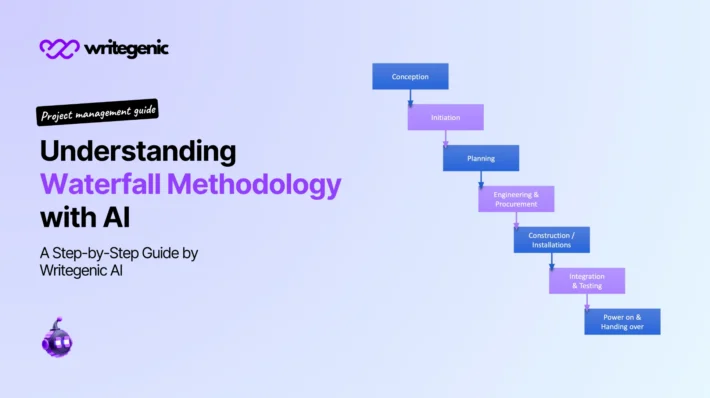Creating a Scope Management Plan: A Step-by-Step Guide

It is very important to have a clear and strong Scope Management Plan to guarantee the success of any project. If you are starting a product, rolling out software or arranging a company event, using a well-prepared project scope management plan helps everyone work together and avoid many risks.
In this article, we’ll show you what is project scope management, why it matters and how to create a project management plan with simple steps. You will also discover how to write a scope for a project which helps the project succeed.
Table of Contents
What Is Project Scope Management?
Project scope management involves figuring out which parts are part of the project and which are not. This means setting the boundaries of the project, confirming with stakeholders what the final outcome will be and taking care of any changes to the scope as the project progresses.
Key Elements of Scope Management:
- Scope Planning: Creating an outline of how to manage the project scope.
- Scope Definition: Creating a clear outline of the work that needs to be done.
- Work Breakdown Structure (WBS): Splitting deliverables into parts that can be managed easily.
- Scope Verification: Ensuring any work completed is up to the right standards.
- Scope Control: Knowing when there are changes and making sure there is no scope creep.
Defining and managing scope at the start helps project managers prevent misunderstandings, missing project deadlines and spending too much money.
Why a Scope Management Plan Important
The scope management plan acts as a useful tool that supports the whole project. This is why it is important:
1. Prevents Scope Creep
Acting without a set scope, projects often grow too large which delays the work and puts pressure on resources.
2. Aligns Stakeholders
If the scope is clear, all team members, clients and stakeholders expect the same from the work.
3. Improves Budget and Timeline Accuracy
It helps to identify what is needed and the outcomes early for accurate reading of timing and money.
4. Enhances Change Management
With the ability to control scope, you can handle proposed changes in an orderly way.
Key Components of a Project Scope Management Plan
Normally, a good project scope management plan consists of these components:

Scope Statement
A clear description of the project’s output, its scope and the parts that are not within its reach.
Work Breakdown Structure (WBS)
A list of each deliverable with the necessary and achievable tasks clearly defined.
Scope Verification
Sets out a process for examining and accepting deliverables from stakeholders.
Scope Control Process
Describes how to suggest, study and apply changes to the project scope.
Roles and Responsibilities
Says who has the duty to outline, verify and maintain the project scope.
How to Create a Project Scope Management Plan: Step-by-Step
A proper scope management plan is built through a few significant actions.
Step 1: Define the Project Needs & Objectives
The first step is to find out the project’s main goals, what it is supposed to deliver and the intended results. Work with others to establish what is most important.
Step 2: Create a Detailed Scope Statement
Write a clear, concise scope statement that includes:
- Project deliverables
- Project exclusions
- Constraints and assumptions
Step 3: Break Down the Work (WBS)
Use a Work Breakdown Structure to separate the project’s scope into smaller pieces. It leads to better monitoring and handling of different tasks.
Step 4: Determine Scope Verification Methods
Specify the process for reviewing the deliverables. Establish a clear process for approving the ideas and decide on what will make them acceptable.
Step 5: Establish a Scope Control Process
Document the process for handling scope changes. This should include:
- Change request forms
- Review and approval procedures
- Communication plans for approved changes
Step 6: Assign Responsibilities
It is important to pick who will look after the approval and management of scope changes.
Step 7: Review and Get Stakeholder Approval
Before you start implementing the scope management plan, let stakeholders look at it and give their input for approval.
How to Write a Scope for a Project
Writing a strong project scope is essential for success. Follow these tips:
- Be Clear and Specific: Avoid vague language. Specify what will and won’t be delivered.
- Use Simple Language: Keep your writing accessible to all stakeholders.
- Include Assumptions and Constraints: Set expectations about resources, time, or dependencies.
- Align with Project Goals: Make sure the scope supports the overall objectives.
- Get Stakeholder Input: Involve the team early to ensure buy-in and prevent rework.
Common Mistakes to Avoid
Try to avoid making these typical mistakes as you build your scope management plan.
Vague Scope Statements
If information is unclear, people might misunderstand and conflict can arise.
Ignoring Stakeholders
If key stakeholders are not included, it may result in conflicts and people not being satisfied.
Not Revisiting the Scope
The scope of the project should be adjusted every time the project progresses.
Skipping Change Control
If you do not have a change management process, it is very likely that the project’s scope will expand.
Conclusion
A clear project scope management plan is necessary to complete projects on schedule and keep budgets under control. Applying the method listed in this guide will ensure you are able to create a project management plan and set a clear scope that brings results.
FAQs
What is a Scope Management Plan in project management?
A Scope Management Plan describes the process for creating, validating and managing the scope of the project. It guarantees that all the project needs are handled properly and the process covers the scope statement, WBS, ways to confirm progress and managing change requests.
Why is a Scope Management Plan important?
Having a Scope Management Plan plays a key role in preventing limits being exceeded, allows all stakeholders to expect the same results, leads to stronger time and budget estimates and offers organization for any project changes.
What is the difference between project scope and scope management?
Project scope explains what will be done and what is expected from a project and scope management is about outlining, governing and checking the project’s defined boundaries. The Scope Management Plan sets out and controls how the project is managed.


